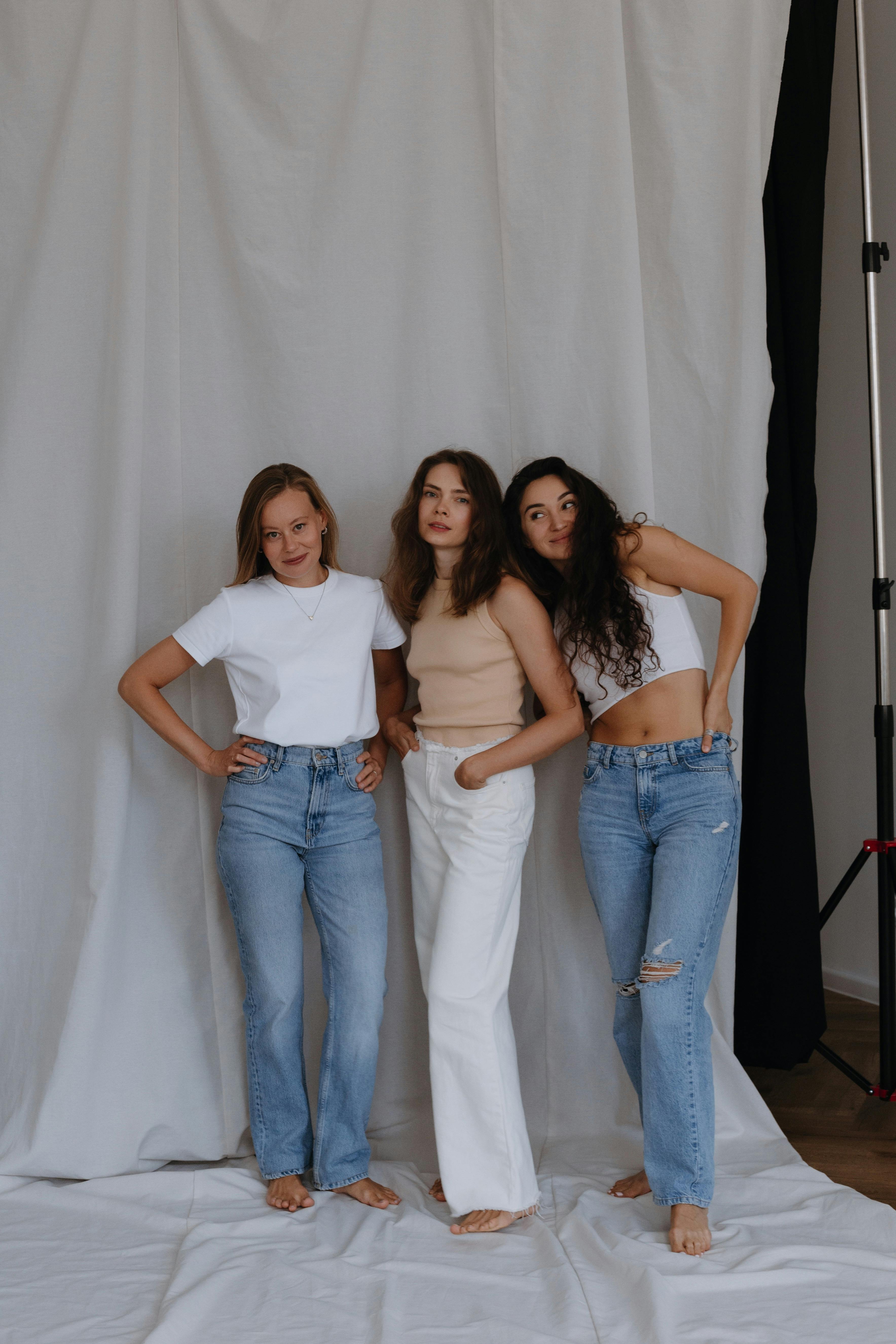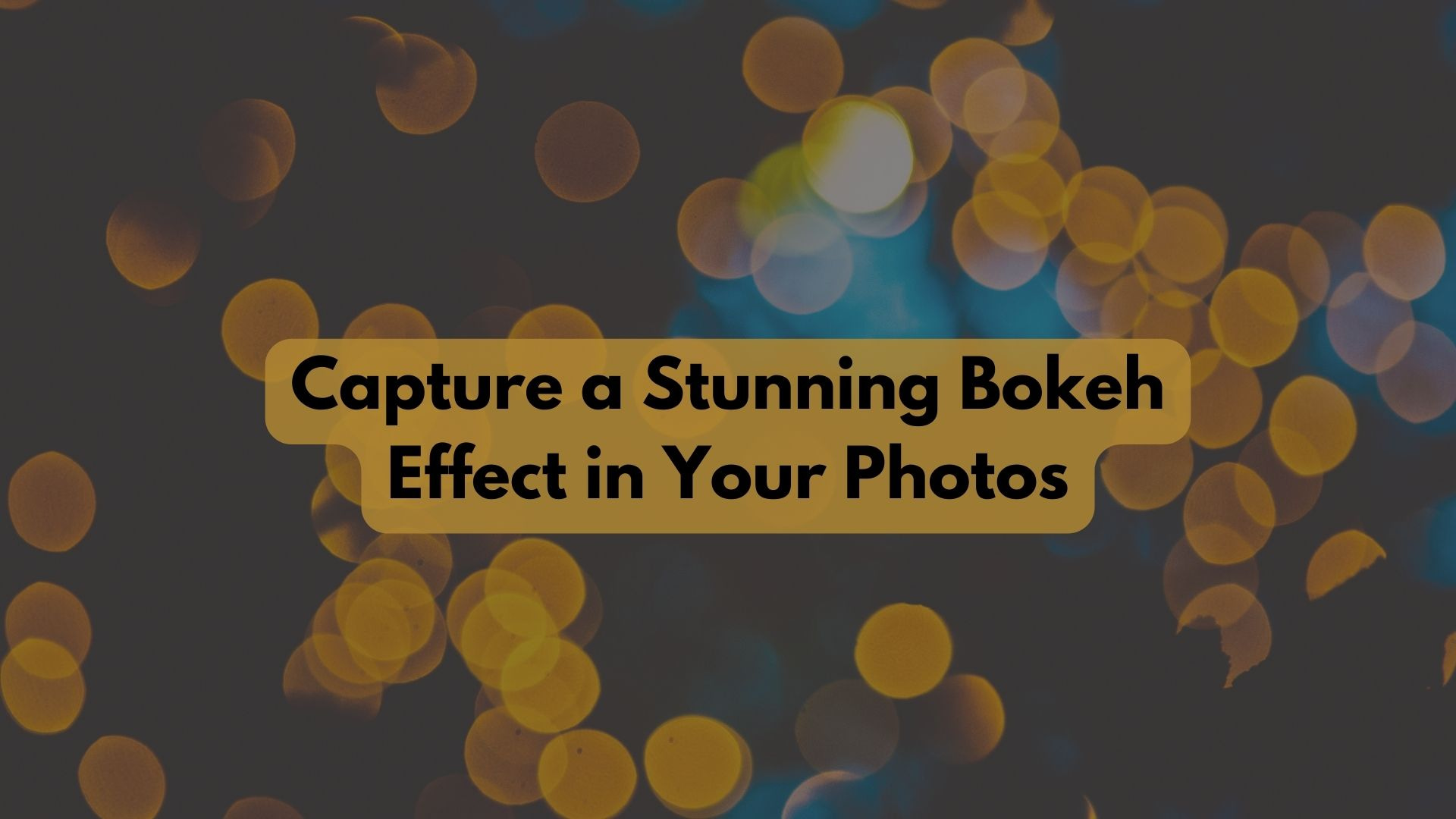If you’ve ever wondered how professional photographers achieve that mesmerizing bokeh effect in their photos, look no further. In this article, you’ll learn the secrets to mastering this art and capturing stunning bokeh in your own photographs.
From understanding the concept of bokeh to choosing the right equipment and utilizing various techniques, this guide will equip you with the knowledge and skills necessary to transform your ordinary images into stunning works of art. So grab your camera and get ready to dive into the world of bokeh photography!
Understanding the Bokeh Effect
What is bokeh?
Bokeh, pronounced as “boh-kay” or “boh-keh,” is a term derived from the Japanese word meaning “blur” or “haze.” In photography, bokeh refers to the aesthetic quality of the out-of-focus areas in an image. It is particularly characterized by smooth, soft, and creamy blurs of light that create a visually pleasing and dreamy effect. Bokeh is achieved by using a shallow depth of field, where the subject is in sharp focus while the background and foreground are intentionally blurred.
Why is bokeh important in photography?
Bokeh plays a vital role in photography as it adds depth, dimension, and visual interest to a photograph. By creating a separation between the subject and the background, bokeh draws the viewer’s attention to the main subject, making it stand out and creating a sense of depth. It can also help convey emotions or set a specific mood in the photograph. Bokeh is especially popular in portrait photography, where it can give a professional and artistic touch to the image.
How does the bokeh effect enhance your photos?
The bokeh effect enhances photos by creating a visually captivating and artistic look. It adds a sense of depth and professionalism to images, making them more visually appealing. By blurring the background, bokeh allows the subject to take center stage, emphasizing its importance and capturing the viewer’s attention. The soft and dreamy bokeh adds a touch of magic and romanticism to the photograph, transforming ordinary scenes into extraordinary works of art. Whether it’s a portrait, a landscape, or a still-life, the bokeh effect can elevate the overall image and create a memorable visual experience for the viewer.
Choosing the Right Equipment
Selecting the ideal camera for capturing bokeh
When it comes to capturing stunning bokeh, choosing the right camera can make a significant difference. Look for a camera with a large image sensor, as this will allow you to achieve a shallower depth of field and better bokeh. Full-frame cameras are often highly recommended for their ability to capture more light and produce impressive bokeh effects. However, it’s worth noting that even cameras with smaller sensors can still produce beautiful bokeh with the right techniques and lenses.
The importance of choosing the right lens
Equally important as the camera is selecting the right lens for achieving the desired bokeh effect. Prime lenses with wider maximum apertures, such as f/1.8 or f/1.4, are preferred for their ability to create a shallow depth of field, resulting in a more pronounced bokeh. Telephoto lenses also excel in producing pleasing bokeh due to their longer focal length. It’s important to consider the lens’s focal length and aperture capabilities to maximize your bokeh potential.
Additional equipment that can enhance bokeh
While having the right camera and lens is crucial, there are additional pieces of equipment that can enhance the bokeh effect. One such equipment is a tripod, which helps stabilize your camera, especially when shooting in low-light conditions or using slower shutter speeds. A tripod allows you to maintain sharp focus on your subject while creating a beautifully blurred background. Additionally, using lens filters, like neutral density (ND) filters or polarizing filters, can help control the amount of light entering the camera, enabling you to achieve the desired bokeh effect even in bright conditions.
Mastering Depth of Field
Understanding depth of field and its impact on bokeh
Depth of field refers to the range of distances within an image that appears in acceptably sharp focus. It is influenced by several factors, including the chosen aperture, focal length, subject distance, and sensor size. Understanding depth of field is essential for achieving the bokeh effect as it determines how much of the scene will be in focus versus intentionally blurred. By using a shallower depth of field, you can create a more pronounced and visually striking bokeh.
Using aperture to control depth of field
Aperture, represented by the f-stop value, is a crucial setting for controlling the depth of field and achieving bokeh. A wider aperture, denoted by a smaller f-stop number (e.g., f/1.8), produces a shallower depth of field, resulting in stronger bokeh. Conversely, a narrower aperture, indicated by a larger f-stop number (e.g., f/16), increases the overall depth of field, making more of the scene appear in focus. Experimenting with different apertures allows you to find the sweet spot that produces the desired bokeh effect.
The relationship between focal length and bokeh
The focal length of a lens also plays a role in the bokeh effect. Generally, lenses with longer focal lengths, such as telephoto lenses, tend to produce a more pleasing and pronounced bokeh. This is because longer focal lengths increase the compression of the scene, effectively blurring the background and isolating the subject. On the other hand, wider-angle lenses have a greater depth of field, resulting in less noticeable bokeh. Consider the focal length of your lens to achieve the desired bokeh effect and creative composition.
Optimizing Camera Settings
Shooting in manual mode for greater control
While many modern cameras offer automatic shooting modes, using manual mode allows for greater control over the camera settings, including aperture, shutter speed, and ISO. To optimize your bokeh photography, switch to manual mode and adjust the settings according to the desired effect. Manual mode provides the flexibility to fine-tune the exposure and achieve consistent results in various lighting conditions.
Appropriate ISO settings for bokeh photography
ISO determines the camera’s sensitivity to light. For bokeh photography, it’s generally best to use the lowest ISO possible to minimize noise and ensure optimal image quality. However, in low-light situations where a higher ISO is necessary, consider how the noise might impact the overall image, including the bokeh. Each camera has its limitations when it comes to ISO performance, so it’s important to familiarize yourself with your camera’s capabilities.
Finding the perfect balance between shutter speed and aperture
The relationship between shutter speed and aperture is crucial in achieving the desired bokeh effect. When shooting in manual mode, start by setting the desired aperture to control the depth of field. Then, adjust the shutter speed accordingly to achieve proper exposure. It’s important to find the right balance, as a fast shutter speed may result in a darker image, while a slower shutter speed can introduce motion blur. Pay attention to the available light and choose settings that allow you to capture a well-exposed image while achieving the desired bokeh.

This image is property of images.pexels.com.
Considering Lighting and Background
Utilizing natural light to enhance bokeh
Lighting plays a significant role in bokeh photography, and utilizing natural light can greatly enhance the bokeh effect. The quality and direction of light can impact the overall mood and aesthetic of the image. Soft, diffused light is often preferred as it creates a pleasing and gentle bokeh. Morning or evening golden hour provides warm, flattering light that works wonders for portrait photography, while dappled light through foliage can create an enchanting bokeh effect in nature photography. Experiment with different lighting conditions to discover the most captivating bokeh.
Creating a striking contrast between subject and background
To make your bokeh stand out, it’s important to create a striking contrast between the subject and the background. Select a subject that stands out against the surroundings, either through color, texture, or shape. When the subject and background contrast, the bokeh effect becomes more pronounced, drawing attention to the main focal point. For example, in portrait photography, a subject wearing vibrant clothing against a neutral or blurred background can create a visually stunning bokeh effect.
Experimenting with different types of backgrounds
The choice of background can significantly impact the bokeh effect. Smooth and uniform backgrounds, such as walls or backgrounds further away from the subject, often produce a pleasing bokeh due to their lack of distracting elements. However, experimenting with different backgrounds can lead to creative and unique results. Textured surfaces, like foliage or bokeh lights, can create interesting and dynamic bokeh patterns. Urban environments with city lights or busy streets can also provide captivating backgrounds for bokeh photography. Don’t be afraid to experiment and let your creativity flourish.
Also Check: 10 Tips for Choosing the Perfect DSLR Camera
Mastering the Focus Techniques
Choosing the correct focus mode for bokeh
When capturing bokeh, choosing the correct focus mode is crucial to ensure the subject remains in sharp focus while intentionally blurring the background. Many cameras offer various focus modes, such as single-point autofocus or continuous autofocus. For bokeh photography, using a single-point autofocus mode allows you to select the exact spot you want in focus, ensuring the subject remains sharp while the background is beautifully blurred. Take your time to choose the focus point carefully and experiment with different compositions to capture stunning bokeh.
Utilizing manual focus effectively
While autofocus can be useful in many situations, manual focus provides greater precision and control over achieving bokeh. When using manual focus, take advantage of the camera’s focus peaking feature, if available, to help identify the areas in focus. Zoom in on the subject through the camera’s viewfinder or LCD screen to fine-tune the focus manually. This technique allows you to have complete control over the depth of field and ensures the bokeh effect is achieved precisely as intended.
Using autofocus points to enhance bokeh composition
Autofocus points can be utilized effectively to enhance bokeh composition. Instead of placing the subject in the center of the frame, consider using the off-center autofocus points to create a more dynamic and visually interesting composition. This technique allows you to position the subject slightly off-center while still maintaining accurate autofocus. By doing so, you can compose the shot in a way that enhances the bokeh and creates a more balanced and aesthetically pleasing image.
Utilizing Composition and Framing
Creating an interesting composition to complement bokeh
Composition plays a vital role in enhancing the overall impact of bokeh in your photos. To complement the bokeh effect, consider the rule of thirds or the golden ratio when placing the main subject within the frame. This creates a visually pleasing balance between the subject, the bokeh, and any other elements in the scene. Additionally, pay attention to leading lines or curves that can guide the viewer’s eye towards the subject and the bokeh. Experiment with different compositions to find the most captivating and visually appealing results.
Utilizing leading lines and framing techniques
Leading lines and framing techniques can help direct the viewer’s attention towards the subject and the bokeh. Look for natural or man-made lines that guide the eye towards the main focal point. For example, a pathway, a row of trees, or a fence can create leading lines that draw attention to the subject immersed in bokeh. Framing techniques, such as shooting through a window or using natural elements like branches or leaves, can add depth and context to the image, further enhancing the bokeh effect.
The role of foreground elements in enhancing bokeh
Foreground elements can contribute significantly to the overall impact of bokeh in your photos. By incorporating interesting foreground elements, such as flowers, leaves, or other objects, you can create a sense of depth and dimension in the image. The out-of-focus foreground elements, combined with the bokeh in the background, add layers and complexity to the composition, resulting in a more visually arresting photograph. Experiment with different foreground elements to enhance the bokeh effect and create a captivating visual story.
Experimenting with Different Subjects
Capturing stunning bokeh in portrait photography
Bokeh is particularly popular in portrait photography as it adds a touch of elegance and professionalism to the images. When capturing portraits, ensure the subject remains in sharp focus while the background melts into a beautiful bokeh. Select lenses with focal lengths between 50mm and 135mm for a flattering compression and creamy bokeh. Use wide apertures to achieve a shallow depth of field and experiment with different lighting conditions and compositions to create visually stunning and unique portrait photographs.
Using bokeh effect in nature and macro photography
The bokeh effect can also be used to elevate the beauty of nature and macro photography. In nature photography, using a telephoto lens with a wide aperture allows you to isolate the subject from the background and create a dreamy bokeh. This technique works particularly well for capturing flowers, wildlife, or scenic landscapes. In macro photography, a shallow depth of field combined with a close-up focus on a small subject can produce mesmerizing bokeh, adding a captivating touch to the intricacies of nature.
Bokeh techniques for still life and product photography
The bokeh effect can enhance still life and product photography, providing a visually pleasing background that highlights the subject. When photographing still life scenes or products, choose a subject that offers interesting textures or shapes and place it against a simple or blurred background. Experiment with different lighting angles and compositions to create unique bokeh effects that enhance the subject and elevate the overall image. The bokeh can add a sense of depth, elegance, and professionalism to still life and product photographs, making them more visually appealing.
Source: Thetechbrain AI
Post-Processing Tips to Enhance Bokeh
Using software to enhance and refine bokeh
Post-processing software can be used to enhance and refine the bokeh effect in your photographs. Programs like Adobe Photoshop or Lightroom offer various tools and filters to adjust the blur, brightness, and overall look of the bokeh. You can selectively enhance or soften the bokeh areas, further emphasizing the subject and creating a more pleasing visual balance. Experiment with different settings and adjustments to achieve the desired bokeh effect during the post-processing stage.
Selective editing to emphasize the bokeh effect
Selective editing is a powerful technique to emphasize the bokeh effect and draw attention to specific areas of your photograph. By using tools like adjustment brushes or masking, you can selectively enhance the bokeh in certain parts of the image, further blurring the background or other elements that may distract from the main subject. Selective editing allows you to fine-tune the bokeh and make it more visually striking, enhancing the overall impact of the photograph.
Adding creative effects to bokeh in post-processing
Post-processing also provides an opportunity to add creative effects to the bokeh in your photographs. You can experiment with adding light leaks, overlays, or even changing the shape of the bokeh using advanced editing techniques. These creative effects can add a touch of uniqueness and personal style to your bokeh photography, making it stand out and leaving a lasting impression on the viewer. Have fun with different effects and explore your creativity to create stunning and artistic bokeh compositions.
FAQ
What is the best lens for achieving a stunning bokeh effect?
While there is no definitive answer to the best lens for achieving a stunning bokeh effect, prime lenses with wider apertures and longer focal lengths are generally preferred. Lenses with focal lengths between 50mm and 135mm, combined with a wide maximum aperture (e.g., f/1.4 or f/1.8), tend to produce a more pronounced and visually pleasing bokeh. However, it’s important to remember that bokeh is not solely dependent on the lens but is also influenced by other factors such as lighting, subject distance, and composition.
Can I achieve a bokeh effect with a smartphone camera?
Yes, it is possible to achieve a bokeh effect with a smartphone camera. Many smartphones now come with built-in portrait modes or lens effects that simulate the bokeh effect. These modes use algorithms to detect the subject and blur the background, creating a similar look to traditional bokeh. However, the quality and control of the bokeh effect may vary depending on the smartphone’s camera capabilities. For more advanced control and a higher quality bokeh effect, using external lens attachments specifically designed for smartphones can further enhance the results.
What are the key settings to prioritize for capturing bokeh in low-light conditions?
When capturing bokeh in low-light conditions, there are a few key settings to prioritize. Firstly, choose a lens with a wide maximum aperture (e.g., f/1.4 or f/1.8) to allow more light into the camera. This wider aperture also helps create a shallower depth of field, enhancing the bokeh effect. Secondly, adjust your ISO setting to a higher value to increase the camera’s sensitivity to light. However, be mindful of keeping the ISO within acceptable limits to minimize noise in the image. Lastly, consider using a tripod to stabilize the camera and prevent camera shake when using longer shutter speeds in low light. This will help maintain sharp focus on the subject while creating a beautifully blurred background.



